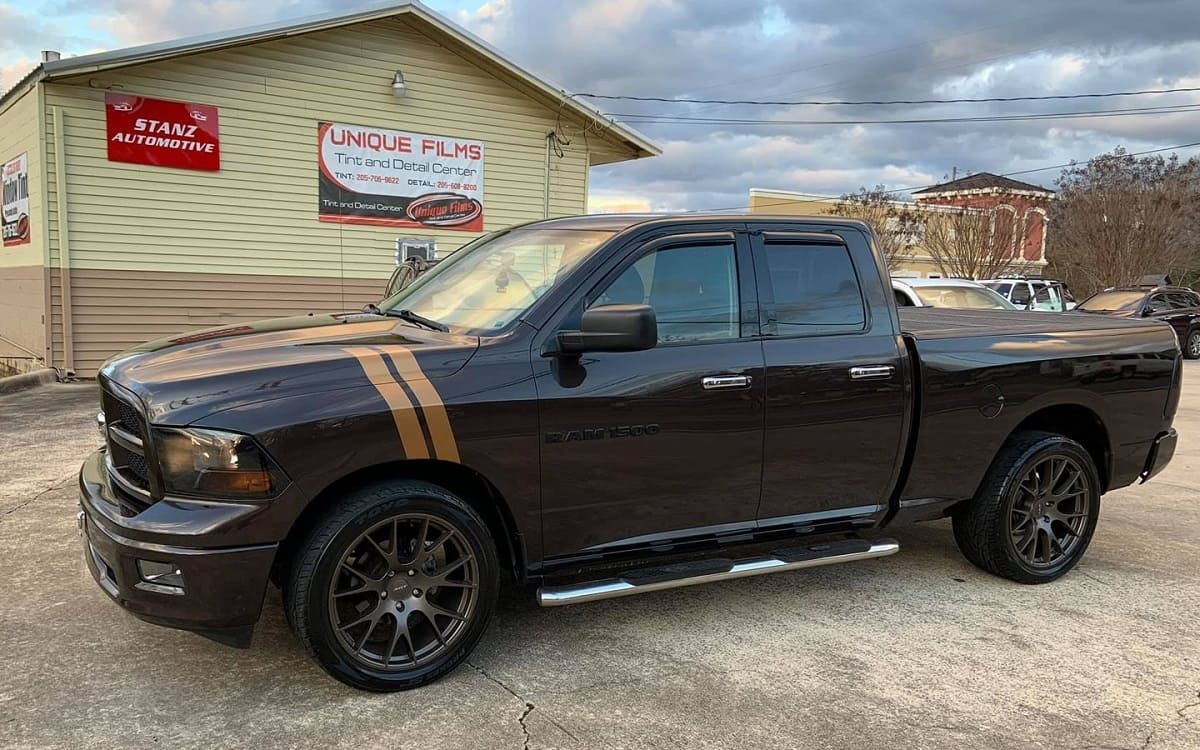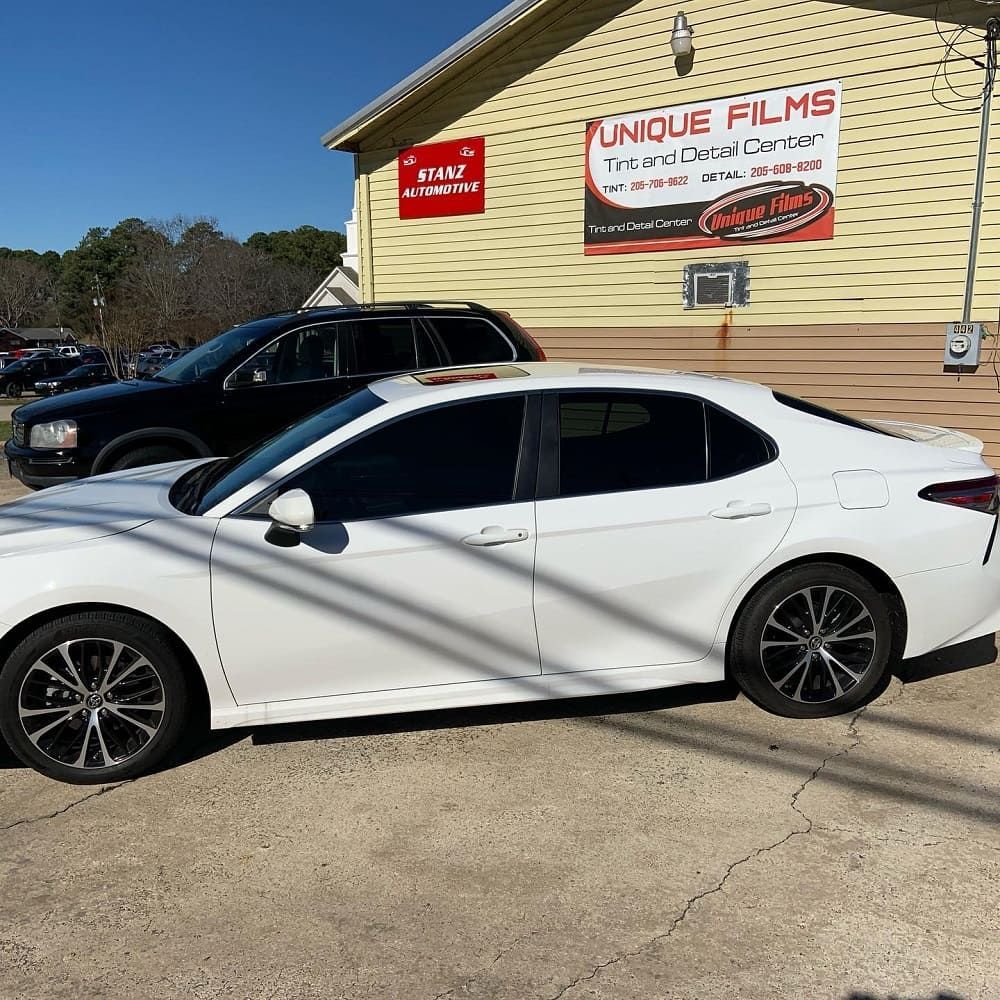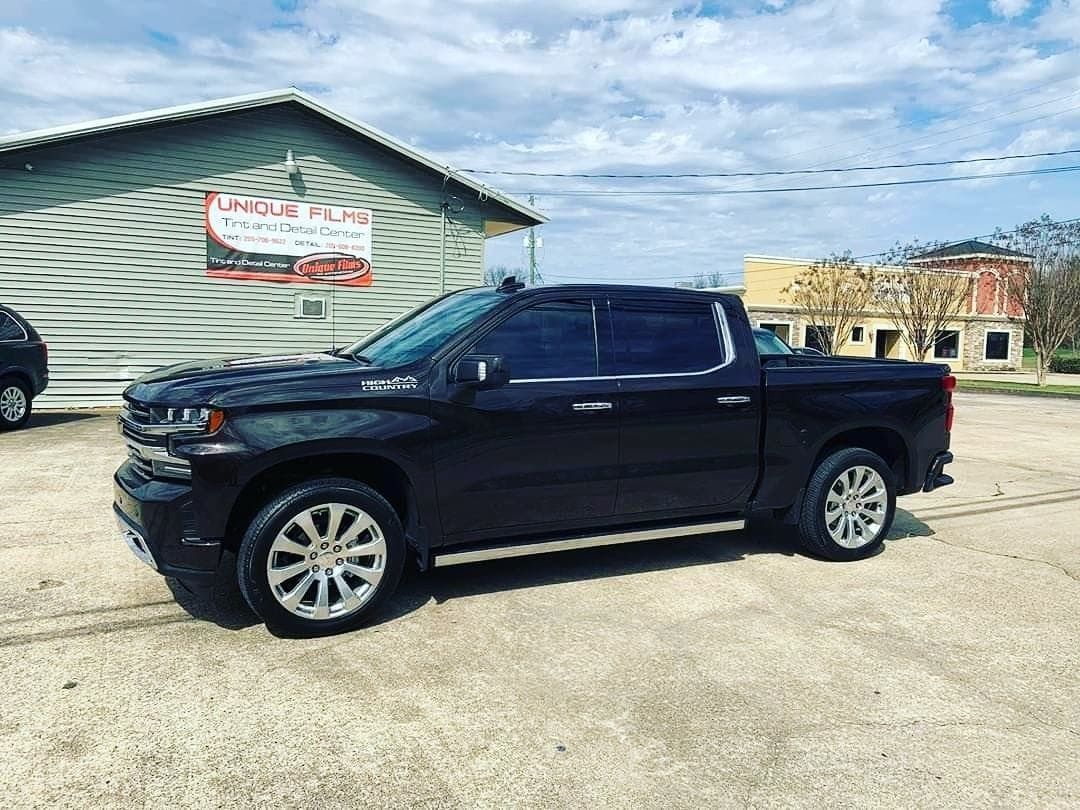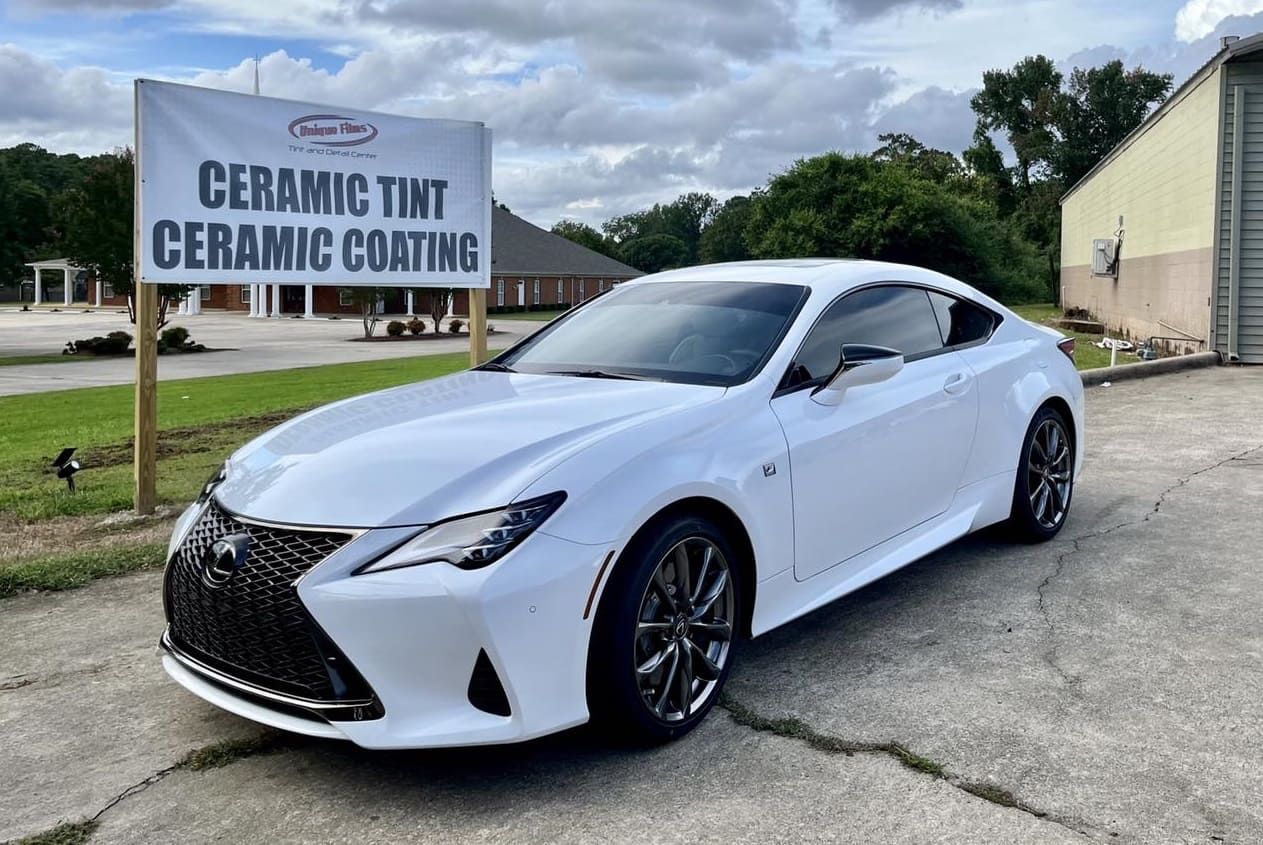Unique Films Tint & Detail Center
Alabama Window Tinting Laws
Car window tinting laws in Alabama were enacted in 1996.
We have provided all the necessary information about your car’s window tint, including how dark or reflective the tint is allowed in your state.
There are also additional car window tinting rules and regulations in Alabama so make sure you read all about it below.
Window tint darkness in Alabama
The percent of visible light allowed through your car windows is called VLT: Visible Light Transmission.
The percentage of light allowed through your film and glass in Alabama is very specific and different for sedan cars and SUV cars or vans.
Tint darkness for sedans:
- Windshield: Non-reflective tint is allowed on the top 6 inches of the windshield.
- Front Side windows: Must allow more than 32% of light in.
- Back Side windows: Must allow more than 32% of light in.
- Rear Window: Must allow more than 32% of light in.
Tint darkness for SUV and vans:
- Windshield: Non-reflective tint is allowed on the top 6 inches of the windshield.
- Front Side windows: Must allow more than 32% of light in.
- Back Side windows: Any darkness can be used.
- Rear Window: Any darkness can be used.
Window tint reflection in Alabama
Window tint can reflect incoming light and reduce glare and heat.
Alabama window tint law permits a certain window reflection when using a tint so make sure you pay attention to this as well.
Tint reflection for sedans:
- Front Side windows: Must not be more than 20% reflective.
- Back Side windows: Must not be more than 20% reflective.
Tint reflection for SUV and vans:
- Front Side windows: Must not be more than 20% reflective.
- Back Side windows: Must not be more than 20% reflective.
Other Alabama window tint rules and regulations:
Alabama does have several other important laws, rules and regulations pertaining to window tinting. They include the following:
- Side Mirrors: No restrictions.
- Restricted Colors: In Alabama all tint colors are permitted.
- Certificates: Manufacturers of film need to certify the film they sell in the state. Ask your dealer if they are using certified film.
- Stickers: The sticker/label of compliance to identify legal tinting is required between the film & glass on each tinted window.
- Medical Exceptions: Alabama permits medical exemptions for special tint. For more details about the specific terms of the exemption, consult AL state law.
- Penalties: Maximum $100 and/or 10 days in prison for first conviction. Second conviction within a year max $200 and/or 30 days in jail. Third and subsequent offense within a year $500 and/or up to 3 months in prison.
Keep in mind that Alabama tinting laws and regulations may be interpreted differently in your county or place of residence.
We always recommend double-checking our information with your local DMV or law enforcement authorities.
Our information about window tint laws in Alabama was last updated in 2024.
Tinting laws in Alabama were enacted in 1996.
In case any of our info provided is not up to date or correct be sure to contact us so we can fix it. Thanks!
Trusted industry leader in providing accurate window tint laws. Share with confidence:
What is the darkest legal tint in Alabama?
In Alabama, the darkest legal tint allowed for vehicles is regulated to ensure safety and visibility. For the front side windows, the law requires a minimum of 32% visible light transmission (VLT), meaning that 32% of light must be able to pass through the window. The rear side windows and the back windshield can also have a tint with a minimum VLT of 32%. For the windshield, only the top six inches can have a non-reflective tint. These regulations help maintain driver visibility and road safety while allowing the benefits of window tinting.
Benefits of Legal Window Tinting in Alabama
Legal window tinting in Alabama offers several benefits while ensuring compliance with state laws. It helps reduce interior heat, making the vehicle more comfortable during the hot summer months and reducing reliance on air conditioning. Tinting also protects the interior from harmful UV rays, preventing fading and cracking of upholstery. Additionally, it enhances privacy and security by making it harder for outsiders to see inside the vehicle. Furthermore, legal tinting reduces glare from the sun and headlights, improving visibility and driving safety. By adhering to Alabama's tint laws, drivers can enjoy these benefits without risking fines or penalties.
Consequences of Illegal Tint
Going beyond the legal limits can lead to fines, inspection issues, and reduced visibility, so it's best to stay compliant.
Conclusion
In Alabama, adhering to the legal window tint limits ensures both your safety and compliance with the law. By staying within the regulations, you can enjoy the advantages of window tint while avoiding fines and potential road hazards. So, when considering window tint for your vehicle, remember to keep it legal and make the road a safer place for everyone.

GARDENDALE, AL
442 Tarrant Rd
Gardendale, AL 35071
BUSINESS HOURS
Monday - Saturday: 8am to 6pm
Sunday:
CLOSED
Homewood, AL
237 Oxmoor Circle, Suite 110
Homewood, AL 35209
BUSINESS HOURS
Monday - Sunday: 8am to 6pm
Saturday:
CLOSED
All Rights Reserved | Unique Films Tint & Detail Center







